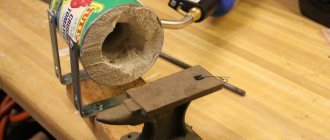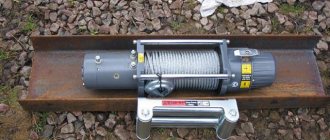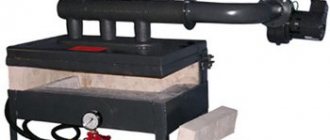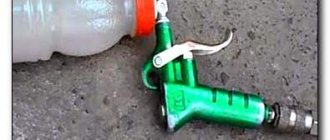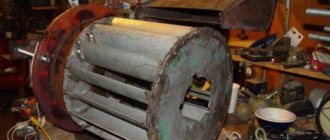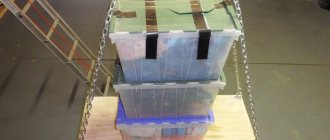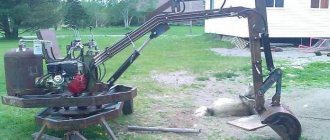A basic set of tools needed for metal forging
The method of imparting plastic properties to metal by heating has been known to mankind since time immemorial. Unlike the so-called “cold forging”, in which the metal is not heated, during “hot” (and, as is considered, “real”) forging, the metal is heated in a forge.
A forge is an open-type furnace in which metal is heated to high temperatures for subsequent forging.
Due to its plasticity, heated metal can be given a wide variety of shapes, which is what masters of artistic forging use.
In addition to experience, which is accumulated over the years, forging requires the appropriate tool. These can be special pliers, mandrels, bending templates, etc., but the hammer and anvil remain the most important “assistants” of a blacksmith for many centuries.
Any person who is thinking about taking up blacksmithing is faced with the need to purchase the appropriate tools. A high-quality and heavy anvil weighing under 100 kg is not a cheap pleasure.
Vintik FORUMHOUSE Member
I bought my anvil by weight at a secondary metal shop. From work experience, I can say: what I couldn’t flatten on a rail, I managed to do on a real anvil.
Olger73 FORUMHOUSE Member
Vtorchermet may be a “gold mine,” but a lot depends on luck. Our price for a used anvil is approaching the cost of a new one. Although I managed to acquire a powerful vice and anvil weighing about 30 kg in this way. Her “face” is, however, dented, but it can be fixed.
So, what to do if you want to forge, but the family budget does not allow such expenses? Moreover, if it is unknown whether the business will be to your liking, or in a few months all the expensive equipment will begin to gather dust in the garage.
In this case, you should take advantage of the experience of FORUMHOUSE participants and acquire a mini-forge made from materials that are at hand. Moreover, even with this “dacha” option, you can make a lot of different things that are needed on the farm, and which you cannot buy in a store or on the construction market.
Olger73
There are few good blacksmiths and, as a rule, they are loaded with orders, and the farm often needs specific products, for example, a forged nail or some kind of “tricky” rivet. In order not to rack your brains with finding a specialist and ordering, and also to save money, it’s easier to do everything yourself. After all, you can’t just buy nails like the ones in the photo below.
Even entry-level forged products allow the home craftsman to significantly expand the range of his work. Handmade furniture or antique decor in a country house looks especially beautiful with forged parts.
Forge forge: gas or coal?
To the question “forge forge: gas or coal?” The short answer is that both gas and coal can be used as fuel for a forge. It is important to know: when and for what purposes. In our article we will give detailed answers to all questions.
If you, dear visitors, have any questions or suggestions, you can share them in the fields of our site. We are always happy to have guests! Ask questions and we will answer them as soon as possible.
To make our further discussions clear, we recommend reading the following articles:
- “Design of a forge”;
- "Fuel for the forge";
- “Forge forge”;
- "Propane forge."
We will refer to them repeatedly throughout the story.
Heating steel
Steel is forged, as we all know, in a state heated to a certain temperature, since only heated metal becomes plastic and is easily deformed. In practice, the following temperature range is used (beginning and end of forging) for different grades of steel:
- start of forging T = 1100…1300 °C;
- end of forging T = 800…900 °C.
The temperature spread is explained by the different amount of carbon in the steel: the more there is, the lower the temperature at which forging begins. Various types of heating equipment are used to heat metal. We will talk about the operation of the most ancient and simplest of them - the forge. The two fundamental designs of this equipment (open and closed) are discussed in detail on our website, and we will not dwell on this now, but will move on to the main issue of our topic - let's talk about some types of fuel. A variety of fuels are used to heat billets in a forge. Our article discusses the two most common: coal and gas.
Blacksmith's forge on coal
When manually forging metal, open-type forges are most suitable for heating it on coal, on which it is convenient to heat forgings of different lengths, and in any part of them (even in the middle).
The design of the open-type furnace is shown in the diagram.
Diagram of a coal forge.
1 – air valve; 2 – firewall; 3 – chimney; 4 – cap with folding curtains; 5 – protective plate; 6 – interval of air cooling of the tuyere; 7 – forge nest; 8 – trough for water cooling the tuyere; 9 – coal box; 10 – wall; 11 – brick vault; 12 – cavity for coal storage.
Let's consider the sequence of actions when lighting a cold forge with coal and creating a working area for heating the metal:
- we clean the furnace nest from slag and ash;
- we blow through the tuyere;
- pour a small layer of coal. At the same time, do not forget to leave the tuyere hole free;
- add wood shavings or a rag soaked in kerosene to the fireplace on the coal and light them;
- add a second layer of coal on top;
- turn on low blowing.
After the coal flares up, add another layer of coal and gradually increase the blast pressure. In the forge, coal is sintered, and a hard crust is formed. A high temperature is created under it. We bury the workpiece in hot coals and pour the next layer of fresh coal on top. A baked hard crust vault should always be kept intact. This is necessary to maintain the required high temperature underneath with minimal fuel consumption. To do this, it is necessary from time to time to add fresh coal (from above and from the sides) from the edges to the center of the hearth nest. If necessary, lightly spray it with water. If the volume of the cavity under the crust becomes too large, then it is broken and fresh coal is raked up. After some time, a new arch is formed.
The blanks are placed under a crust of sintered coal, and their heating begins. The forgings should be rotated periodically. In addition, the air supply should be adjusted in such a way as to maintain a slightly smoky and neutral flame. Otherwise, overheating of the metal is possible with all the ensuing consequences:
- scale formation;
- burnout, etc.
All these manipulations should be continued until the metal is completely heated.
Gas forge
All steps to prepare the working area in a gas forge consist of igniting the gas in the burner and placing forgings in this flame. And that’s it – their warming up begins. To stop the heating of the metal, it is necessary to shut off the gas supply. The heated metal is located directly in the burner flame (see the above article about a forge heated by propane). Therefore, to change the heating temperature of the metal, it is enough to change the gas flow (compare with adjusting the temperature in coal forges).
In industrial forges, natural monogas propane is used, which has been purified in containers with naphthalene. This is necessary in order to bind the sulfur present in the gas. It is contained there in very small quantities, but, nevertheless, its contact with steel is very dangerous.
Closed-type gas horn “BLACKSMITH GOR-1”.
In non-industrial equipment, a propane-butane mixture is usually used. The use of propane is very beneficial from an economic point of view:
- on the one hand, this gas has a lower cost compared to other types of fuel;
- on the other hand, a gas-powered forge has a simplified design (for example, there is no grate).
The advantages of a gas forge are obvious. But, in fact, not everything is so “beautiful”. Let's compare the advantages and disadvantages of both types of fuel.
Comparison of the advantages and disadvantages of gas and coal forges
Let's compare the advantages and disadvantages of gas and coal forges:
- the design of a gas furnace is in many ways simpler than similar coal-fired equipment;
- Adjusting the temperature in a gas forge is much easier than in a coal one. It consists of turning the valve on a propane cylinder (compare with a whole range of measures on coal-fired equipment);
- the gas horn, due to its low weight and ease of installation and disassembly, can be considered mobile;
- The cost of propane is significantly lower than the cost of coal.
But the gas forge has two global disadvantages:
- the impossibility of processing large-sized workpieces on it;
- increased fire and explosion hazard.
Such forges are also used for processing small parts that are not responsible and are not subject to further loading. An example is the decorative elements of artistic metalwork. Using the gas equipment described above, the hands of a master using “hard pieces of iron” can create such a miracle!
A miracle of metal.
It's up to you to choose, we hope that our article will help you.
Vote
If you have already decided, help others, mark your choice in the survey below (write your options in the comments):
You can choose where to buy a forge using the page “Where to buy a forge”.
